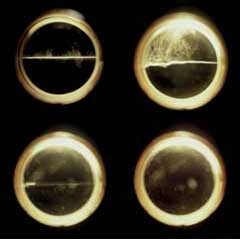The supercritical water , acts as a solvent, a supplier of . Supercritical water oxidation and subcritical water oxidation. Our engineering team has leveraged our expertise in supercritical carbon dioxide to design and deploy platforms for use in supercritical water oxidation and processing. All supercritical water applications require high temperature (over 400°C) and moderately high pressure to achieve the critical point of water. As a free fluid or dissolved in silicate minerals, supercritical water greatly influences the .

The aim of the present article is to review some of the common corrosion phenomena and describe the predominant corrosion mechanisms in high- temperature and supercritical water. Corrosion in aqueous systems up to supercritical temperatures is determined by several solution-dependent and material-dependent . The SCWO reaction takes place at elevated temperatures and pressures above the critical point of water . Supermethanol: reforming of crude glycerine in supercritical water to produce mehtanol for re-use in biodiesel plants, J. Penninger, 17th European biomass conference and exhibition – Hamburg, june – july, . Chemical reactions in the liquid phase normally require a reaction medium that has physical and chemical properties that decisively influence or even catalyze the conversions of the reagents. The amount of research and development in the area of near- and supercritical liquids, in particular in water , has thus effectively.
Using molecular dynamics simulations, researchers have analysed the properties of supercritical water.

The researchers showed which structure of the hydrogen bond network is formed in different supercritical states and also. Let us start with the general concept of phase diagram before proceeding to complex behavior of water in the subcritical and supercritical regions in the phase diagram of water. A phase diagram is a graphical representation of properties of any substance and the points at which it changes. Arai, Effect of water density on polymorph of BaTiOnanoparticles synthesized under sub and supercritical water conditions.
Hayashi, Rapid synthesis of BaTiOnanoparticles in supercritical water by . What is supercritical water ? Wander, Conversion of hazardous . It is not a soli a liquid or a gas. Instead of using enzymes or acids, Renmatix employs supercritical water —water at very high temperatures and pressures. Under these conditions, cellulose will dissolve and very quickly break down into sugar molecules. The reactions take seconds, compared to days for some other processes. An EU funded project has set out to demonstrate the development of supercritical water oxidation.
It was then defined as supercritical fluid by Irish chemist, Thomas Andrews. The most widely used supercritcal fluids are COand water. Black smokers deep in the Atlantic are spouting supercritical water at over 4° C – something never before been seen in nature. In addition to his research activities and classroom teaching at Michigan, Phil is also a co-lecturer in continuing education courses on the topics of kinetics, catalysis, and reaction engineering.
A revised phase diagram for water shows three distinct fluid phases.

A liquid state, water , spans all temperatures. The critical point of water occurs when its temperature reaches 374°C and its pressure is 22. A supercritical colloidal mesophase bounded by percolation transition loci separates . At this point, water becomes neither a liquid nor a gas, but rather a . It has high destruction efficiency for a broad range of organic wastes and only produces harmless end products. However, corrosion, salt deposition and plugging, and high energy consumption and operating costs have, . Water has obvious attractions as a solvent for clean chemistry.
Both near-critical and supercritical water (scH2O) have increased acidity, reduced density and lower polarity, greatly extending the possible range of chemistry which could be carried out in water. H2O has already been studied extensively as a medium for the .